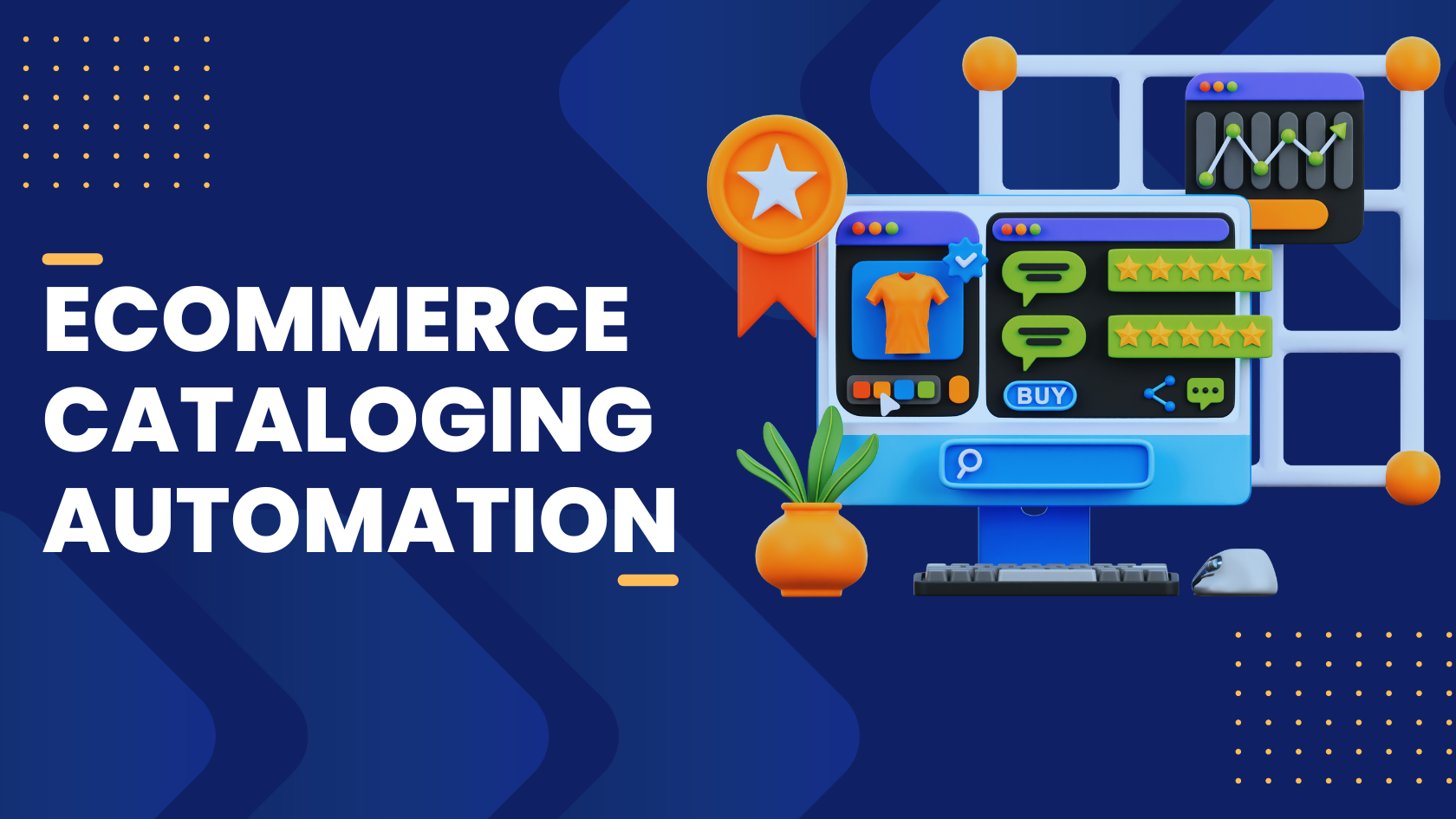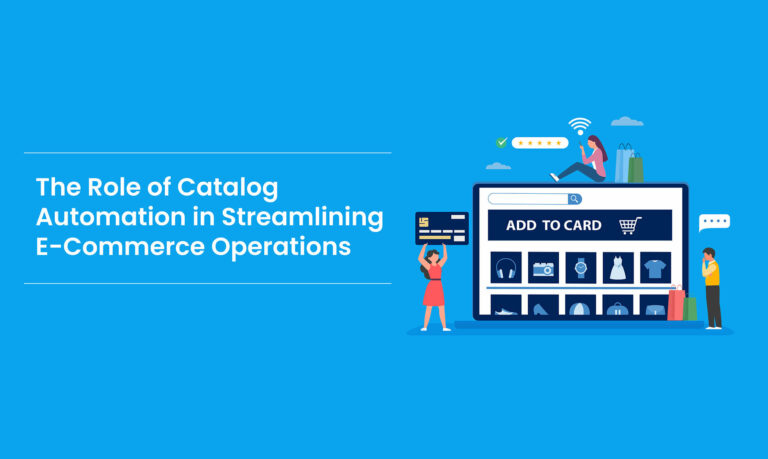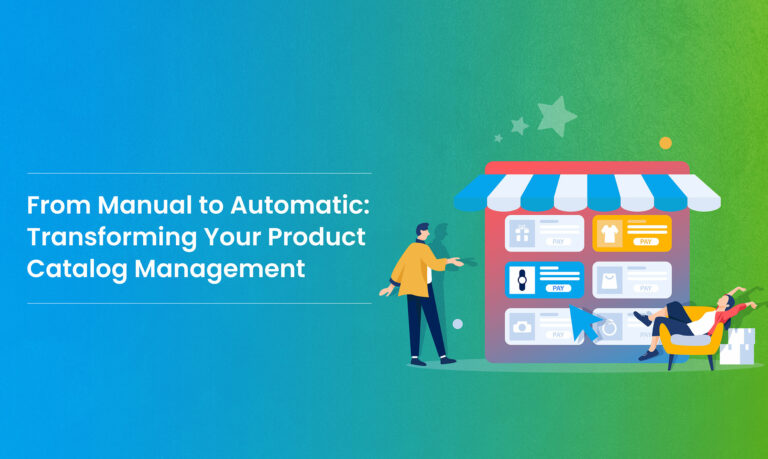Inefficient catalog handling can trigger an uptick in product returns. Customers who receive items that don’t align with the online information are more likely to seek returns, leading to increased costs for processing returns and restocking. This impacts the brand’s earnings and contributes to overall customer discontent, perpetuating a cycle of subpar customer experiences.
eCommerce catalogs streamline marketing activities by consistently and accurately presenting all product information. This coherence in information allows for more effective marketing campaigns, as businesses can easily create targeted promotions and advertisements based on reliable catalog data. This streamlining saves time and enhances the impact of marketing efforts.
Cataloging automation gives online businesses useful information from their catalog data, streamlining catalog management. By looking at how customers interact with products and how well products are doing, businesses can make smart choices about managing inventory, setting prices, and suggesting products. Based on data, this approach makes operations work better overall and helps businesses stay ahead in the market.
Cataloging Automation – Introduction
The ability to adapt to consumer expectations and market shifts is crucial for success. One key element affecting customer experience and operational efficiency is catalog management. Managing the details of what you’re selling is crucial in the e-commerce landscape. An e-commerce website doesn’t just deal with one or two types of items; it handles many of them, and all that info needs to be organized. Keeping track of your products in a well-organized catalog is crucial for steady growth.
As your business expands, managing your catalog becomes a bigger challenge. This is where Cataloging Automation by Rubick.ai comes in, which handles product information efficiently and offers the benefit of automated inventory management.
What is E-commerce Catalog Management?
E-commerce catalog management is about organizing and maintaining product information across digital platforms. This ensures that customers consistently get accurate details – descriptions, prices, images, and specifications – providing a smooth online shopping experience. It’s not just about putting things in order; it’s ensuring customers get the right details about each product, no matter where they look.
Traditional catalog management systems, often built on web-centric stacks, no longer meet the expectations of modern consumers. Manual data entry falls short of delivering the expected experiences. As highlighted by the PwC Future of Customer Experience Survey, a single negative experience can make a business lose 32% of its customers, highlighting the costly impact of errors in catalog management.
To address these challenges, catalog automation tools automate complex data entry processes and facilitate efficient management. Rubick.ai’s cataloging automation stands out as a tool that uses advanced technology to make catalog management simpler and more effective.
Impact of Poor Catalog Management
Now, imagine if the details about a product on a website differ from what the product is. That can cause problems. If a customer buys something based on wrong information, they might want to return it. This messes up the brand’s image and can impact sales. Here’s how it can go wrong:
- Bad Customer Experience: The brand spends a lot of effort making good content, but the sellers might not put in the same effort. Some brands let others sell their products, and that can be challenging. If those sellers don’t do a good job with listings, the brand can’t control how customers see and feel about their products. They have to depend on others for their success.
- Revenue Loss: People pay attention to pictures and details when they decide to buy something online. If what they see isn’t good, they might not trust the seller. This can make them choose a different product from a different brand, and that means less revenue for the brand with the bad listing.
- Impacts Brand Image: If people see a bad-quality listing, they don’t blame the seller; they blame the brand. So, when catalogs are not done well, it’s the brand’s reputation that takes a hit. Changing what people think about a brand is tough once they have a bad impression.
- Low Product Visibility: When the details about a product are not clear, it might not show up when people search for it online. It’s like the product becomes invisible to those who might want to buy it.
- Delay Decision: If it’s hard to understand what a product is all about, customers might not be sure if they want to buy it. This confusion leads to them leaving the shopping cart without buying anything. If they find another product with clear details, they’ll choose that one.
Best Practices for Catalog Management
Let’s look at some of the best practices that can be implemented in terms of catalog management.
- Quality Product Information: The most important thing is to make customers trust your brand. Provide them with accurate and reliable info about your products. Update the details regularly, include everything they need to know, and make sure the pictures are good quality.
- Categorize: Make it easy for customers to find what they’re looking for. Organize and classify your products so that they can quickly see and choose what they want. This also helps in selling more things without pushing.
- Management Strategy: Keep your catalog organized in one place. This makes it easier to manage. Give access only to the right people, and make sure everyone knows what to do. When your business grows and you add new products, keep the catalog up to date with automated inventory management.
- Cataloging Automation Tool: Choose a tool that helps you manage your products better. Look for one that fits your business needs and makes your work smoother. Check what your business needs, how complicated your catalog is, and what you plan for the future. Pick a tool that fits all these.
- Personalize: For businesses selling to other businesses, personalization is crucial. Make sure the things you offer are what your business customers need. Check if your personalized solutions match what your customers are looking for.
- Balance Offline & Online Catalogs: If you manage your product catalog both online and offline, make sure they work together. The information should be the same in both places. This way, whether people see your products on the internet or in a store, they get the same details.
What is Cataloging Automation?
Cataloging Automation is an organized way of managing and sorting product information in an online catalog using automated tools and technologies. The significant increase in product lines within the e-commerce industry necessitates a strategic approach to catalog management. A well-executed e-commerce catalog automation strategy is crucial for maintaining an organized, up-to-date catalog supported by high-quality information.
Some businesses start with manual methods or basic tools like Excel, but as the number of products increases, doing things manually becomes difficult. Cataloging Automation involves using technologies like image generation, Natural Language Processing (NLP), and Machine Learning (ML) for automated inventory management and simplifying the catalog management process.
Importance of E-commerce Product Catalog Automation
Cataloging Automation is essential as it brings the following perks to your e-commerce business:
1. Enhanced Customer Experience:
A good catalog ensures a consistent and satisfying experience for customers. Accurate product descriptions are crucial for customers during the buying process. With Catalog Automation, businesses can provide reliable and consistent product information, which builds trust and keeps customers satisfied.
2. Business Expansion:
E-commerce businesses struggle with managing large-scale content entries. Catalog Automation makes it easy to introduce new products smoothly. Businesses can manage new and existing products by assigning them to relevant categories, reducing the confusion that comes with adding new items. This capability allows for easy business expansion without losing efficiency.
3. Efficient Categorization:
Frequent product updates make manual catalog management time-consuming and prone to error. Catalog Automation ensures efficient categorization by accurately connecting product descriptions with the right items and categories. This accuracy boosts customer confidence in the brand and improves the overall shopping experience.
Cataloging Automation with Rubick.ai
Rubick.ai leads the way in Cataloging Automation, offering a range of features powered by advanced technologies. Once Rubick.ai receives input data from users, which can be anything from product details to images, different AI algorithms are used. These algorithms generate the required information, and its cloud QC team takes care of the final editing and quality control processes.
The unique features of Rubick.ai include:
- Rubick.ai uses advanced tech like image generation, NLP, and ML to easily create catalog images, generate content, enhance product visuals, ensure accurate audits, and simplify image uploads.
- It maximizes decision-making potential by efficiently gathering valuable data from various sources. This allows businesses to make informed decisions and improve their marketing strategies.
- Smart AI solutions in Rubick.ai organize and extract useful information from images, saving time and boosting productivity.
- The tool uses AI to create engaging and customized content, saving time and enabling scalable content generation for a diverse product range.
- Effortlessly integrate data or content onto predefined templates, ensuring smooth integration and consistent formatting across your entire catalog.
- Rubick.ai incorporates cloud-based quality control mechanisms to ensure the accuracy, consistency, and adherence to predefined standards and guidelines for your data.
To experience the capabilities of Cataloging Automation with Rubick.ai, book a demo session today.
Conclusion
To wrap it up, keeping your online store organized is super important. If your product details are wrong or messy, it can cause trouble for your brand. Following these best practices, especially using the right tools and keeping things simple, can make your business run smoother. Cataloging Automation not only enhances the customer experience but also improves operational efficiency and ensures competitiveness in a crowded market.
As your product line grows, automated inventory management becomes not just a necessity but a smart move. Tools like Cataloging Automation by Rubick.ai make the process simpler and more efficient. The integration of advanced technologies sets Rubick.ai apart, offering a comprehensive solution for businesses looking to stay ahead in the competitive online market.


